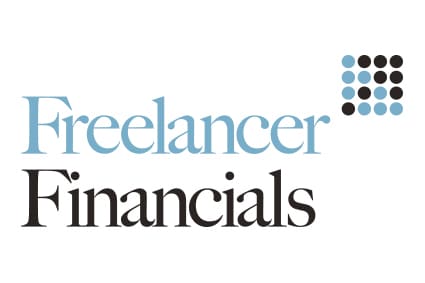Over five years of uncertainty for Elaine Richardson, director of ECR Consulting Ltd, was brought to an end recently when the First Tier Tax Tribunal decided that IR35 did not apply to ECR's contracts with Vertex Data Science Ltd (VDS) during the period 6th April 2002 – 27th March 2005.
Miss Richardson is a highly skilled IT worker specialising in software development and started her business in June 1993 following being made redundant by her previous employer.
In late 2001, she was approached by Best People Ltd, an agency, to provide computer services to VDS but she declined the invitation as she was involved with another contract. When asked again in February 2002, however, she accepted an offer of a daily rate of £600. No interview for the position took place as Best had sourced Miss Richardson's CV from her company's website.
The first contract between Best and ECR lasted 6 months from 6th March 2002 – 5th September 2002 but was extended to 27th December 2002, although the agency terminated it early on 18th November. ECR resumed its working relationship with VDS on 21st April 2003 for a much reduced rate of £350 per day after initially rejecting an offer of £300 per day. This second contract ran until 25th July 2003 but was extended to 23rd February 2004.
Following a takeover of Best by Spring Technology Staffing Services Ltd (Spring) a series of contracts and extensions ensued, covering the period 15th March 2004 – 27th March 2005.
In November 2005, HMRC came calling to conduct a review of the business records of ERC. After exchanges of correspondence with ECR's agents, Lawspeed, the Revenue concluded that the IR35 legislation was applicable and in December 2007 raised tax and NIC assessments for the three years ended 5th April 2005 totalling £51,500.
The upper level contracts between VDS and Best/Spring were considered by the Tribunal to be less than satisfactory as they were unsigned by either party and appeared to be generic agreements provided by VDS as their “IT Procurement Services” contract. Nevertheless, as the agreements appeared to have been acted upon they were treated as valid. The contract specifically named Elaine Richardson, with other notable clauses being;
- The contractor was to “perform to a standard consistent with the requirements specified by VDS”. If VDS deemed the contractor unsatisfactory, then a replacement would have to be found within 3 working days. Furthermore, any contractor who did not meet VDS's standards would also be required to be replaced by the agency, if necessary;
- Best was to indemnify VDS against all losses, liabilities, claims, costs and expenses up to £2 million; and
- VDS could terminate the contract on 4 weeks notice.
The contracts between Best and ECR provided that:
- The services were to be initially provided by Elaine Richardson. A substitute could be proposed but would only be accepted if approved in writing by both agency and end client;
- At the end of the initial agreement Best were under no obligation to offer further work and ECR were not obligated to accept any such work, if offered.
- ECR were to indemnify Best in similar terms to the agency's obligation to VDS; and
- The agency were entitled to terminate the contract on 28 days notice or pay ECR in lieu of notice.
Substitution
Although both contacts permitted a right of substitution , HMRC argued that the relevant clauses were not absolute in their terms. In a meeting with HMRC, two senior employee's of VDS testified that their company would not have accepted a substitute. They also stated, however, that the use of contractors was a budgetary matter and that they were engaged to control risk in relation to expenditure and it was this fact that persuaded the Tribunal that a valid substitution clause existed. VDS used contractors on the basis that they could obtain the best advice at the most reasonable price and relied on the agency to provide freelancers. It therefore appeared immaterial who was appointed provided they possessed the necessary skills to undertake the work. On this basis the Tribunal deemed that a right of substitution was not impaired as had been suggested by HMRC.
Control
Miss Richardson worked within a design team that consisted of between 12 – 14 workers some of whom included VDS employees and who performed similar work to her. A Design Team Leader headed the team and Elaine Richardson had an immediate Line Manager.
The Design Team Leader gave evidence that she had overall control of Miss Richardson but the Tribunal disagreed that this was the case, as they could not accept that Elaine Richardson could be told how to do the work or the time she should take doing it. Simply advising Miss Richardson of the way in which VDS worked did not amount to control.
VDS operated a peer review system for the monitoring and maintenance of standards but the Tribunal considered these to be a mechanism for the whole team to examine how the project was progressing with a view to resolving problems rather than a tool to ensure that Elaine Richardson had dealt with the system properly.
Elaine Richardson's internal timesheets were at odds with VDS's records. The end clients' records, prepared for the purpose of the agency contracts and invoices, simply indicated that she had worked 37 ½ hours each week. Miss Richardson's records, on the other hand, showed variations from 31 – 45 hours each week. It was therefore deduced that she was paid an hourly rate based on a 37 ½ hour week, receiving no more money for working longer hours. That Miss Richardson was able to work the hours she pleased proved she was not controlled by the Design Team Leader in relation to her working practices.
The upper level contracts provided that the services could not be varied without consent and therefore VDS could not be said to have daily control. Neither did VDS have control over how the work was done nor when it was to be done, as the contracts indicated that the contractor could ultimately decide the method of working using their own skill and expertise.
Although Miss Richardson was given a personal pass, this did not make her an employee.
During her first contract, Elaine Richardson, rented accommodation in Bolton where she was working and although VDS terminated the contract early she still continued to pay rent. The Tribunal felt it was unlikely that an employee would have been left with such a liability.
Overall, therefore, it was concluded that VDS did not have sufficient control.
Mutuality of obligations (MOO)
Once again HMRC wheeled out their narrow and simplistic argument as to what constituted MOO, ie, the contractor was required to provide their own work and skill in return for agreed pay. During the last few years Tribunals have been sympathetic to this interpretation but not this one. Here, VDS was unconcerned as to the identity of the contractor but was more interested in acquiring a necessary skill for the shortest period of time as inexpensive as possible.
The termination provisions clearly indicated that there was no obligation on either party to employ/work for the other. This was borne out when Elaine Richardson initially refused to work for EDS and also when VDS terminated the first contract prematurely.
There was therefore no MOO.
Financial risk
HMRC argued that Miss Richardson took no financial risk as she did not have to buy any equipment to perform her work, all invoices were paid on time and there was no risk of a bad debt. During the time she worked for VDS she had no opportunity to carry out any other work and thereby increase the profits of her company. Miss Richardson had, however, provided advice to two other clients whilst working for VDS.
Due to the sums of money being paid to ECR, the Tribunal believed that VDS would have been justified in suing the agency in the event of negligence and, in turn, ECR would have been sued by the agency. Such a liability was likely to be substantial and ECR would also have had its contract terminated early. It was because of the growing compensation culture that ECR took out comprehensive insurance cover to safeguard against the threat of being sued. Taking this into account therefore it was not true to say that there was an absence of financial risk.
Business on own account
ECR provided Miss Richardson with business cards and had its own company stationary. The business was operated from a dedicated area of her home and ECR had its own website. ECR advertised its services and was a member of the PCG. The company retained reserves and invested in development and over the years had undertaken work on a fixed priced basis for a number of clients.
This evidence was enough for the Tribunal to decide that ECR was a genuine business and therefore “not a target of the IR35 legislation”.
It is refreshing that this Tribunal arrived at some of its judgements by going back to some basics and applying employment status tests as they were originally intended and not allowing the waters to be muddied as has been the case over recent years. Is this the shape of things to come? Only time will tell.





Leave a Reply